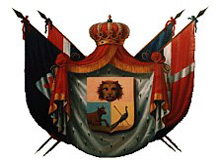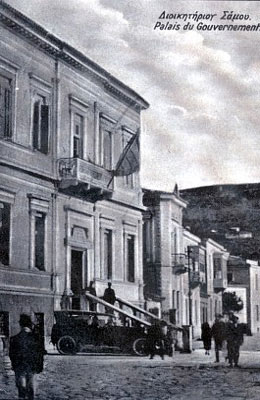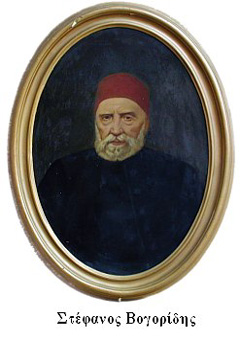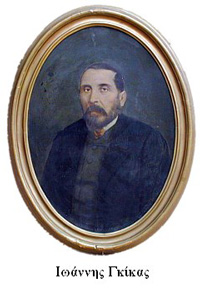|
|
Samos as an
Autonomous Principality
(1834-1912) |
| |
 |
| The
political action of the great forces, France, England and Russia,
in the area of the Ottoman Empire, resulted in the principality of
Samos. Samos became an autonomous small state, subject to the
sultan. The prince was Christian, a higher official of the Sublime
Porte, and was appointed by the sultan. He governed the island in
cooperation with a four-member local government, which was
called the Parliament and was elected by the General Assembly of
the proxies of every town or village. The principality lasted
until 1912, when, after a revolution, Samos declared its union
with Greece. The 1912 revolution was not the only one against
authority. There had been other revolts and protests before, due
to various causes and on various pretexts, related mainly to the
violation of privileges or to the oppressive exertion of authority.
The first period of the principality government, until 1849, was
the cruelest one for Samos. The real leaders and the most dynamic
part of the population had migrated and been ruled out of the
social life of their homeland. The administration of Stephanos
Vogoridis, the first prince, focused basically on tax-gathering,
from people that were already experiencing an economic crisis.
Such mistakes resulted in the revolt of 1849, which defined better
the privileges and the terms of the autonomy. |
 |
In
1851, when George Konemenos arrived at the island as the
principality’s deputy, the autonomous status was
established.
The small state’s services and the courts of law were organized,
schools were built in all villages, as well as a printing-office,
basic laws were voted and the piracy was wiped out. In 1855, John
Ghikas being the prince, the Pythagorion Secondary School started
working as a higher educational establishment, and soon after as a
higher girls’ school. Great teachers from all over Greece were
called and scholarships were given to those able to study. Many
young graduates continued their studies in Greece, Constantinople
or abroad. Finishing their studies, they returned to Samos and by
participating in the social and political affairs, they forged the
new cultural and political forces of the place. Their influence on
the Samian society was soon made evident.
Samos developed more and more in the last quarter of the 19th
century, following the trends of the time. |
 |
| Public
works, such as roads and harbours are built, public and
private buildings embellish the city, education is
reorganised, industry, especially tanning and tobacco
industry, agriculture, trade and shipping flourish as well.
After the destruction of the vineyards from a plant disease,
tobacco cultivation developed and viniculture revived with
the introduction of American vines. During the last period
of the principality government, doctors, Greek literature
teachers, lawyers, agronomists, architects, civil engineers
and other scientists and scholars contribute to the cultural
development of the place. Apart from the formal newspaper
SAMOS, many others were printed, too (EVNOMIA, PATRIS, PHOS,
PROODOS, AEGEON etc). |
 |
|